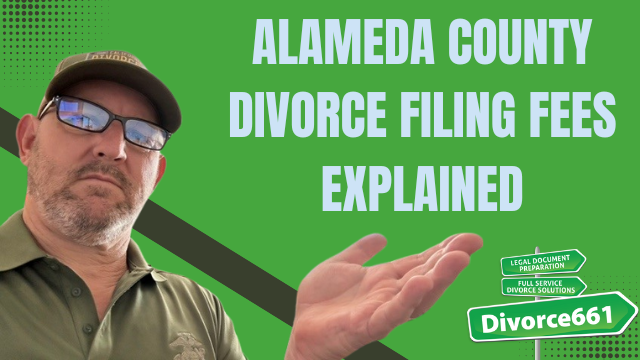How to Finalize Your Divorce Quickly in Alameda County | Alameda Divorce
Introduction
Hi, I’m Tim Blankenship with Divorce661. If you’re filing for divorce in Alameda County and want to finalize it as quickly as possible, there’s good news: while California requires a mandatory six-month waiting period, that doesn’t mean your paperwork has to drag out. In this post I’ll walk you through how to move fast, avoid common delays, and get your judgment package filed correctly so the court can approve it as soon as it’s allowed.
How the Six-Month Clock Works
The six-month waiting period starts on the day your spouse is served or signs the Notice of Acknowledgement of Service. That date is important because the court cannot finalize the dissolution until six months have passed.
“The six-month waiting period starts the day your spouse is served or signs the notice of acknowledgement.”
That said, you don’t have to sit idle for six months. You can and should complete everything else right away so that when the six months are up, the divorce finalizes automatically without additional court hearings.
Fastest Path: Complete Everything Immediately
The fastest way to finalize is simple in concept: complete all required paperwork — including mandatory disclosures and your settlement agreement — as soon as possible, and file your judgment package the moment the court will accept it.
- Prepare and exchange required financial disclosures immediately.
- Negotiate and sign a settlement agreement that covers all issues (assets, debts, support, custody if applicable).
- Assemble the judgment package (including judgment, Notice of Entry, and any required attachments) and e-file it with the court.
If everything is accurate and complete, the court will approve the judgment package without the need for a hearing. That approval, combined with the six-month clock having already started, means your divorce will finalize automatically once the waiting period ends.
Alameda County eFiling: Get It Right the First Time
Alameda County requires electronic filing for all family law documents. That makes accuracy and formatting critical. If your judgment package is missing information or is formatted incorrectly, the court will reject it — and a rejection can add weeks or months to your timeline.
Key eFiling tips for Alameda County:
- Follow the court’s naming and PDF requirements exactly.
- Include all required forms and signed exhibits in the correct order.
- Double-check dates, signatures, and service information before filing.
- Confirm the Notice of Acknowledgement or proof of service is properly documented so the six-month clock is clear.
Common Reasons Courts Reject Judgment Packages
- Missing or unsigned forms (for example, unsigned judgment or missing proof of service).
- Incorrect or inconsistent dates that confuse the six-month calculation.
- Poorly formatted PDFs, bookmarks, or missing attachments required by eFiling rules.
- Lack of required disclosures or incomplete settlement terms.
Real Client Timeline: How Fast Is Fast?
To illustrate what’s possible, here’s a real example from my practice. A couple in Alameda County:
- Filed their petition and served each other within the first week.
- Exchanged disclosures and reached a full settlement within three weeks.
- We prepared and submitted their judgment package on day 31.
The court approved the judgment package shortly after filing. Now they’re simply waiting for the six-month mark to pass for the divorce to become final automatically. The only remaining delay was the statutory waiting period — everything else was completed quickly and correctly.
How Divorce661 Helps You Move Quickly
At Divorce661 we handle every part of this process so you don’t have to worry about paperwork or eFiling rules. Our services include:
- Preparing all required forms and disclosures accurately.
- Meeting Alameda County’s strict eFiling formatting and submission requirements.
- Assembling and submitting the judgment package at the earliest allowable date.
- Guiding you through service, notice, and timeline questions so the six-month clock is clear and uncontested.
We operate on a flat-fee model with complete case management from start to finish — no surprise charges, no unnecessary court appearances, and fewer chances for delay.
Quick Checklist to Finalize Faster
- Serve your spouse or get the Notice of Acknowledgement signed right away.
- Exchange financial disclosures immediately after filing.
- Negotiate and sign a comprehensive settlement agreement.
- Have an expert prepare and e-file your judgment package the moment the court allows.
- Confirm the court approves the judgment package and track the six-month finalization date.
Conclusion and Next Steps
If you want your divorce completed as quickly as possible in Alameda County, the key is preparation and correct eFiling. The waiting period is fixed by law, but the paperwork timeline is not. Complete everything right away and file properly to avoid unnecessary delays.
If you’re ready to move fast and get it done right, visit Divorce661.com and schedule a free consultation. We’ll help you finalize your divorce in record time — without court, without confusion, and without unnecessary delays.
Contact
Divorce661: https://divorce661.com — Schedule your free consultation today.






